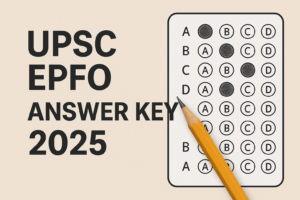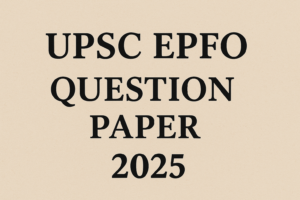Table of Contents
Contentment is Natural Wealth, Luxury is Artificial Poverty UPSC Essay
In a small village nestled in the hills of ancient India, a weaver named Kavi lived a simple life. His days were spent crafting vibrant fabrics on a handloom, his evenings filled with laughter and stories shared with his family under a modest roof. Kavi owned little, yet his heart was full, his contentment was his wealth. One day, a merchant from a bustling city offered him a chance to trade his loom for a life of luxury: silken robes, a grand house, and endless feasts. Kavi declined, saying, “My loom weaves peace; your gold buys only burdens.” His choice puzzled the merchant but resonated with timeless wisdom: Contentment is natural wealth, while luxury often breeds artificial poverty. This essay explores this profound statement through historical, political, economic, environmental, and technological dimensions, arguing that contentment fosters true fulfillment, while luxury creates a hollow pursuit of excess.
Historical Dimension: Simplicity Endures, Extravagance Fades
- Kavi’s choice to prioritize contentment over luxury mirrors the resilience of historical societies that valued simplicity.
- Ancient Indian villages, like the one Kavi inhabited, often thrived on sustainable, modest living, as seen in the Indus Valley civilization (circa 2500 BCE).
- In contrast, the decadence of Versailles under Louis XIV, with its extravagant court costing France 10% of its annual revenue, fueled social unrest and the French Revolution. History teaches that contentment fosters resilience, while luxury often sows seeds of collapse.
Political Dimension: Power in Restraint, Weakness in Excess
- Politically, the pursuit of luxury can destabilize governance, while contentment strengthens societal cohesion. Leaders who prioritize simplicity often inspire trust.
- For example, Uruguay’s former president José Mujica, dubbed the “World’s Poorest President,” donated 90% of his salary to charity and lived in a modest farmhouse, earning global admiration for his integrity.
- Conversely, regimes marked by ostentatious displays of wealth, like Mobutu Sese Seko’s Zaire, where he amassed billions while 80% of the population lived below the poverty line, collapsed under corruption and rebellion.
- Contentment in leadership aligns with public welfare, while luxury breeds inequality and distrust, as seen in the 2011 Arab Spring, where extravagant rulers faced uprisings from discontented masses.
Economic Dimension: Wealth in Enough, Poverty in Wanting More
- Economically, contentment reduces the artificial poverty created by luxury’s endless demands. The global luxury goods market, valued at $1.1 trillion in 2022, thrives on manufactured scarcity and status-driven consumption.
- The “hedonic treadmill” theory explains how luxury purchases provide fleeting joy, trapping individuals in a cycle of spending.
- For instance, Americans with incomes over $100,000 report only marginal happiness gains compared to those earning $50,000, per a 2020 Princeton study. Contentment, by valuing “enough,” frees individuals from this cycle, creating sustainable economic well-being.
- Contentment encourages sustainable consumption and equitable distribution, while luxury often drives inequality and waste.
- India’s luxury goods market is expanding rapidly. According to IMARC (2024), it is valued at USD 10.01 billion, projected to reach USD 17.94 billion by 2033 with a CAGR of 6.4%. Statista similarly estimates it at USD 17.67 billion in 2024, growing steadily through 2029. This surge reflects rising aspirations among India’s affluent classes.
- At the same time, inequality persists. The Global Multidimensional Poverty Index (UNDP 2023) shows 16.4% of Indians still live in multidimensional poverty.
- When vast resources are funneled into luxury cars, branded fashion, and high-end weddings, they highlight the paradox of “artificial poverty” where abundance exists, but human needs remain unmet.
Social Dimension: Connection Thrives in Simplicity, Isolation Grows in Splendor
- Socially, contentment fosters genuine human connections, while luxury often breeds isolation and superficiality.
- Communities built on shared values and modest living, like Kavi’s village, thrive on mutual support and trust. For example, studies from the 2019 World Values Survey show that societies with strong communal ties, such as those in Bhutan, report higher life satisfaction despite lower GDP per capita.
- Bhutan’s Gross National Happiness index prioritizes well-being over wealth, emphasizing relationships and cultural preservation.
- In contrast, luxury-driven societies often face social fragmentation; a 2023 study by the University of California found that individuals prioritizing material wealth over relationships reported 25% higher rates of loneliness.
- Contentment nurtures cohesion and respect, whereas luxury fuels competition, anxiety, and alienation. In India, luxury consumption is often tied to social signaling. Sociologist Thorstein Veblen’s concept of “conspicuous consumption” applies directly, Luxury items are purchased not just for utility but to display status.
- This is visible in the boom of luxury automobiles—Mercedes-Benz India sold 19,500 cars in 2024, its best-ever year, and now plans to expand into smaller cities to capture younger aspirants (Reuters, 2025).
Environmental Dimension: Nature Rewards Restraint, Punishes Greed
- Luxury’s environmental toll underscores its artificial poverty, while contentment aligns with ecological balance. The production of luxury goods, such as private jets or high-end fashion, contributes significantly to carbon emissions.
- For example, the fashion industry, driven by luxury brands, accounts for 10% of global CO2 emissions, according to a 2019 UN report. In contrast, communities practicing minimalist lifestyles, like the Amish, have a carbon footprint 80% lower than the average American household. Contentment encourages sustainable consumption, buying less but better, reducing strain on finite resources.
- The 2020 Earth Overshoot Day, falling on August 22, highlights how overconsumption, fueled by luxury, depletes Earth’s resources faster than they can be replenished.
Technological Dimension: Tools for Fulfillment, Not Frenzy
- Technology amplifies the divide between contentment and luxury. Social media platforms, designed to fuel desire for status and luxury, increase dissatisfaction; a 2021 study in The Lancet linked Instagram use to lower self-esteem in 30% of young adults.
- Conversely, technology can foster contentment when used mindfully. Apps like Headspace, with over 70 million users, promote mindfulness and gratitude, aligning with contentment’s ethos.
- The rise of the “digital minimalism” movement, advocated by Cal Newport, encourages using technology to enhance life’s meaning rather than chasing curated, luxurious facades online.
- Technology, when harnessed for connection and growth, supports natural wealth; when used to flaunt excess, it deepens artificial poverty.
Way forward: Embracing contentment in a luxe-obsessed world
- To shift from luxury’s artificial poverty to contentment’s natural wealth, individuals and societies must prioritize mindfulness, equity, and sustainability.
- Education systems should teach financial literacy and emotional resilience, emphasizing “enough” over “more.”
- Governments can incentivize sustainable practices through tax breaks for eco-friendly businesses and penalties for wasteful luxury industries.
- Communities can foster contentment by reviving local traditions of shared resources, like community gardens or tool libraries, reducing reliance on conspicuous consumption.
- Technology should be redirected toward tools that enhance well-being, such as platforms for skill-sharing or mental health support, rather than fueling envy-driven purchases. By valuing what truly matters, relationships, purpose, and balance, society can cultivate a wealth that endures.
Conclusion: The Weaver’s Wisdom Revisited
- RKavi, the humble weaver from our opening anecdote, reminds us that true wealth lies not in what we possess but in what we cherish.
- In a world dazzled by luxury’s fleeting allure, embracing contentment offers a timeless antidote to artificial poverty. By choosing Kavi’s path, finding richness in simplicity, we can weave lives of lasting fulfillment, proving that contentment is indeed our natural wealth. The essence of the statement lies in distinguishing between real prosperity and illusory affluence. Across history, economics, society, politics, technology, and the environment, we see that contentment brings resilience, harmony, and sustainability, while luxury often breeds inequality, social tension, and ecological strain.
- As India envisions Viksit Bharat 2047, the balance between aspiration and moderation will be crucial. Luxury can symbolize progress, but contentment must anchor it, ensuring inclusivity and sustainability. In the words of Swami Vivekananda, “A man who is content with what he has is truly rich.”
Thus, true wealth lies not in owning more, but in needing less. Contentment is the natural treasure that sustains life, while unchecked luxury is but a gilded poverty hollow, unsatisfying, and ultimately unsustainable.

 UPSC EPFO Answer Key 2025 Out (Unofficia...
UPSC EPFO Answer Key 2025 Out (Unofficia...
 UPSC EPFO Question Paper 2025 PDF Downlo...
UPSC EPFO Question Paper 2025 PDF Downlo...
 UPSC EPFO Admit Card 2025 Out @ upsc.gov...
UPSC EPFO Admit Card 2025 Out @ upsc.gov...

























